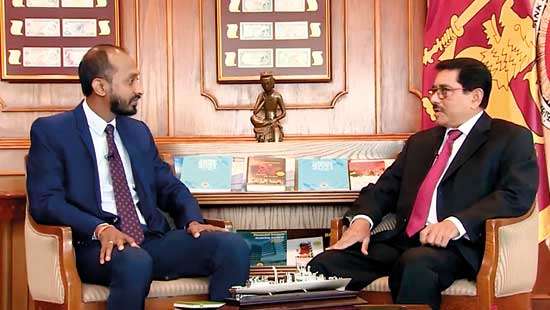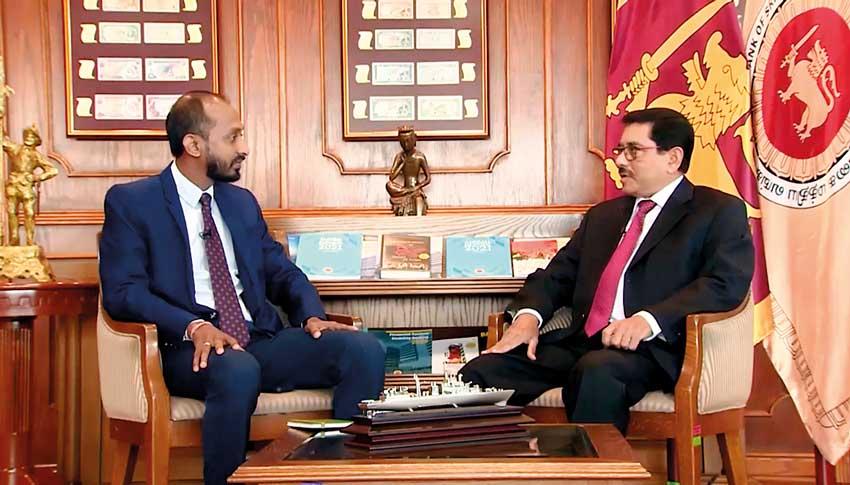Reply To:
Name - Reply Comment


President’s Media Division Director General Dhanushka Ramanayake in discussion with Central Bank Governor Dr. Nandalal Weerasinghe
The economic rescue programme with the International Monetary Fund (IMF) remains the only path available for Sri Lanka to emerge from the prevailing economic crisis, as no one else is ready to bail out Sri Lanka, according to Central Bank Governor Dr. Nandalal Weerasinghe.
Sri Lanka plunged into its worst economic crisis in March and announced a debt default in April after Weerasinghe’s immediate predecessors followed what was referred to as a ‘home-grown solution’, through which they attempted to bridge the budget deficit via domestic borrowings while trying to narrow the deficit in the balance of payment through bilateral funds.
“As far as I can see, this (IMF) is the only way out once we come to this level,” Dr. Weerasinghe said referring to the country’s bleak external reserves position, which compelled Sri Lanka to announce a debt default in April.
“Had we acted earlier, we could have attempted other things. Once our reserves fall to this depth and when no one else is ready to give us any loans, the IMF remains the only window for us as a member country to obtain some kind of a loan,” he added.
In a one-on-one discussion with President’s Media Division Director General Dhanushka Ramanayake last week, to make sense of the prevailing economic condition and the most recent tax hike, which caused some outrage, Dr. Weerasinghe said the tax reforms remain at the forefront among the slew of reforms to fix the budget deficit, which is partly responsible for Sri Lanka’s economic meltdown.
Sri Lanka ran blow-out budget deficits over 11 percent of gross domestic product for two consecutive years, partly caused by the necessity to provide stimulus to those who were affected by the prolonged pandemic.
However, the financing of the deficits was nearly entirely done through the Central Bank liquidity or printed money, as Sri Lanka lost access to international debt capital markets in early 2020, after the rating agencies cut the sovereign rating on heightened concerns of debt sustainability, largely due to the sweeping tax cuts in late 2019.
While excessive money printing partly caused the current bout of runaway inflation, global commodities price boom created by supply chain bottlenecks, Russia-Ukraine war and the strengthening of the US dollar against the other currencies also have contributed.
Speaking of the progress made on restructuring external debt, Dr. Weerasinghe said the team has made very good progress on that front at the IMF meetings held in Washington a fortnight ago.
“We made very good progress at the IMF meetings last week on debt restructuring,” he said.
Financing assurances, first by bilateral lenders led by India, China and Japan and then by private creditors, remain a key sticking point in activating the US $ 2.9 billion Extended Fund Facility with the IMF.
Restructuring of debt involves maturity extensions and relief during the first couple of years in debt service payments until the country regains its ability to repay its debt.
Sri Lanka is hopeful of obtaining financing assurances from its bilateral creditors by December this year to activate the IMF deal in January, which will then open up avenues to unlock other multilateral and bilateral funding to the country, partly enabling to alleviate the current hardships faced by the public.